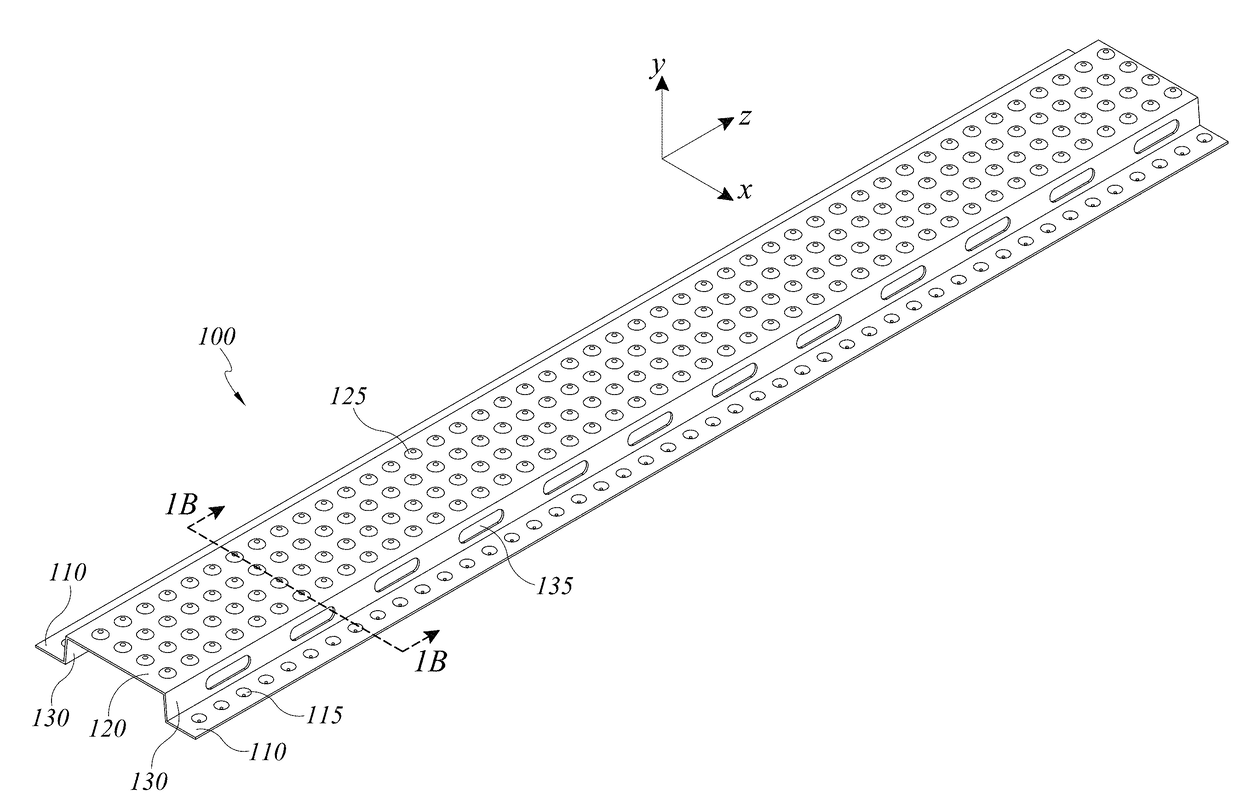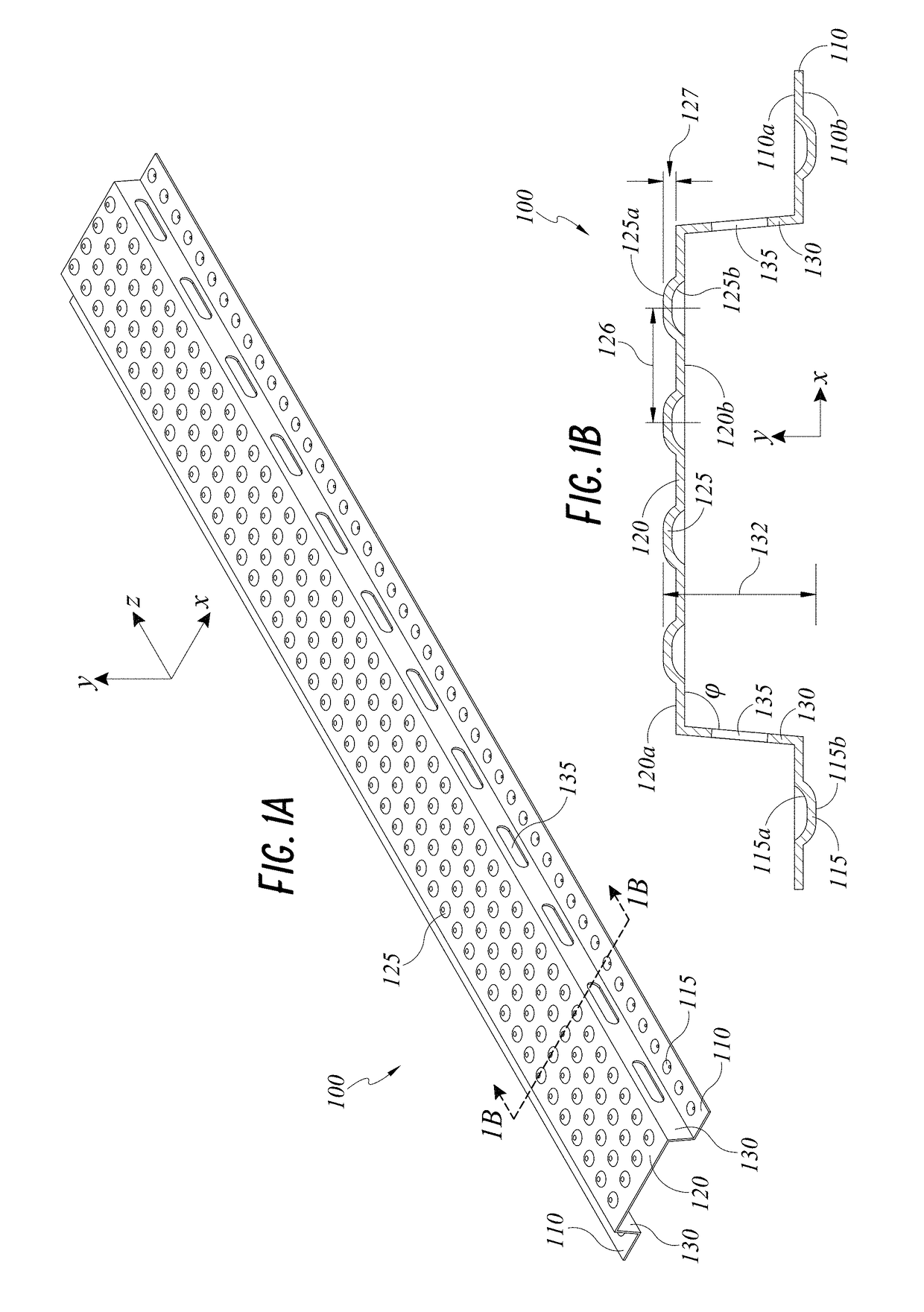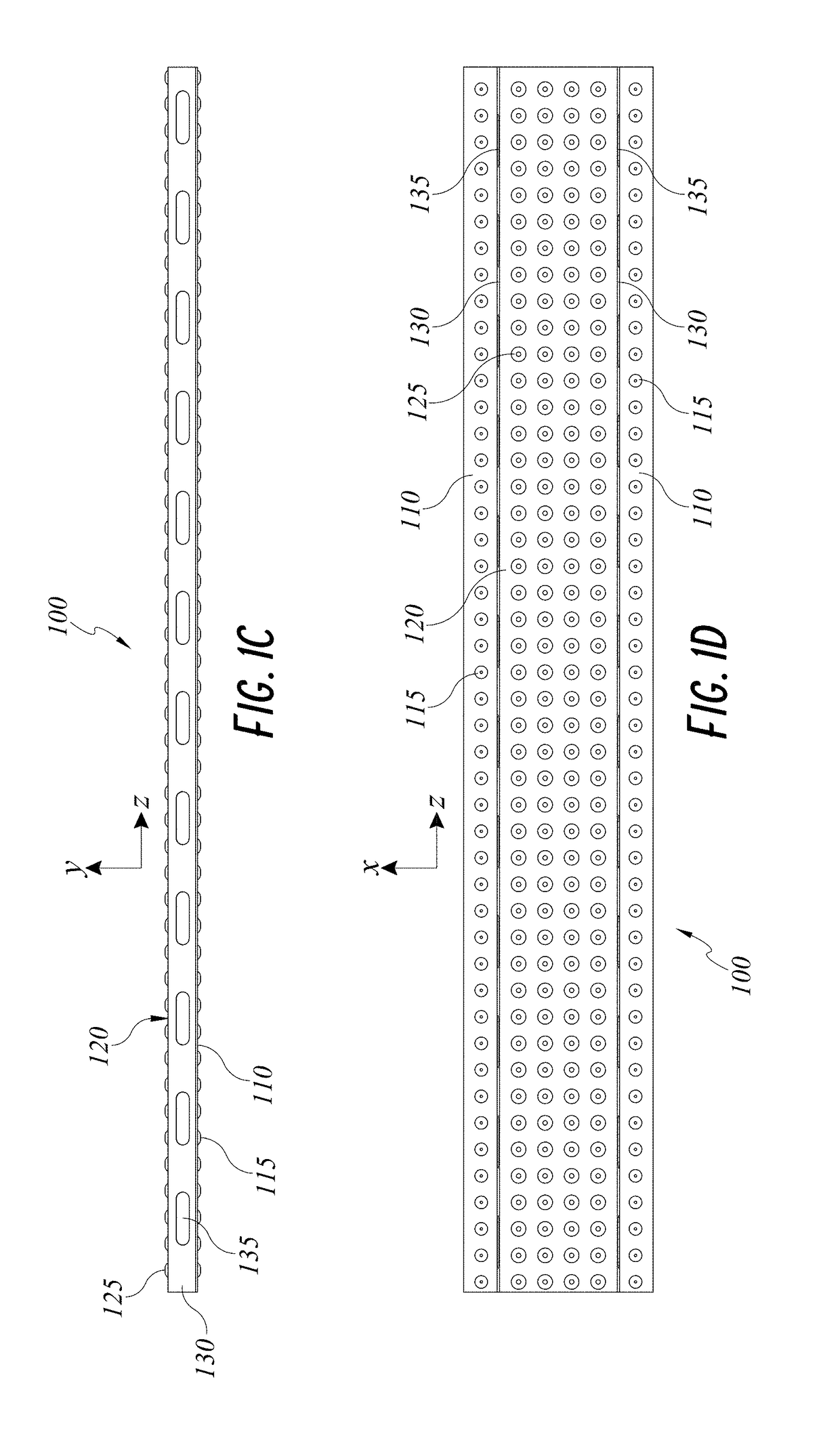Multifunction structural furring system
a technology of structural furring and cladding panels, which is applied in the direction of covering/lining, construction, building components, etc., can solve the problems of limiting drainage and drying capacity, cladding system failure, and wind load rating of cladding panels fastened to conventional furring strips that may be less than desirabl
- Summary
- Abstract
- Description
- Claims
- Application Information
AI Technical Summary
Benefits of technology
Problems solved by technology
Method used
Image
Examples
first embodiment
[0050]FIGS. 1A-1D depict a furring strip 100 incorporating drainage functionality. The furring strip 100 is a lineal structural member having a profile defined generally by legs 110, a face 120, and webs 130 disposed between and contiguous with the legs 110 and the face 120. The legs 110 are substantially planar and include leg dimples 115 spaced along the length of each leg 110. Similarly, the face 120 is substantially planar and parallel to the legs 110, with face dimples 125 spaced in an array along the length and width of the face 120. Webs 130 extend between the lateral ends of the face 120 and the medial ends of the legs 110, with web openings 135 spaced along the length of the webs 130. The dimples 115, 125, and web openings 135 provide enhanced drainage and ventilation, as will be described in greater detail below.
[0051]The furring strip 100 is configured to be installed adjacent to a building substrate to secure a cladding article, such as a fiber cement panel or the like, ...
second embodiment
[0057]Referring now to FIGS. 2A-2D, a furring strip 200 similarly comprises two legs 210, a face 220, and two webs 230 connecting the legs 210 and the face 220. The furring strip 200 is substantially similar in structure and function to the furring strip 100 depicted in FIGS. 1A-1D, including spaced leg dimples 215 and face dimples 225 arranged in an array of four rows. Unlike the furring strip 100 of FIGS. 1A-1D, the face dimples 225 of the furring strip 200 are arranged in a plurality of offset rows, wherein each row is displaced along the length of the furring strip 200, relative to each adjacent row, e.g., by 0.140625 inches (3.57 mm). As the lengthwise dimple spacing 226 of the face dimples 225 is 0.5625 inches (14.288 mm), the offset between adjacent rows results in a configuration in which no two face dimples 225 are centered on a line along the width of the furring strip 200.
[0058]Similar to the furring strip 100 of FIGS. 1A-1D, the furring strip 200 can comprise a metal suc...
third embodiment
[0059]FIGS. 3A-3D depict a furring strip 300 incorporating drainage functionality similar to the furring strips 100, 200 described above. The furring strip 300 includes legs 310, a face 320, and webs 330 connecting the legs 310 and the face 320. The face 320 includes face dimples 325 in a regular array configuration. Similar to the furring strip 100 of FIGS. 1A-1D, the face dimples 325 have a diameter of 0.3125 inches (7.938 mm) and are spaced along the length and width of the face 320 at 0.5625 inches (14.288 mm).
[0060]The furring strip 300 has a total height (as measured from the inner surface 310b of the legs 310 to the center of the protrusion 325a of the face dimples 325) of 0.375 inches (9.525 mm). The face dimples 325 have a height of 0.125 inches (3.175 mm). Due to the relatively shorter height of the webs 330 relative to the webs 130, 230 of FIGS. 1A-2D, web openings 335 of the furring strip 300 have a length of 1.125 inches (28.575 mm) and a height of 0.071 inches (1.8034 ...
PUM
 Login to View More
Login to View More Abstract
Description
Claims
Application Information
 Login to View More
Login to View More - R&D
- Intellectual Property
- Life Sciences
- Materials
- Tech Scout
- Unparalleled Data Quality
- Higher Quality Content
- 60% Fewer Hallucinations
Browse by: Latest US Patents, China's latest patents, Technical Efficacy Thesaurus, Application Domain, Technology Topic, Popular Technical Reports.
© 2025 PatSnap. All rights reserved.Legal|Privacy policy|Modern Slavery Act Transparency Statement|Sitemap|About US| Contact US: help@patsnap.com



